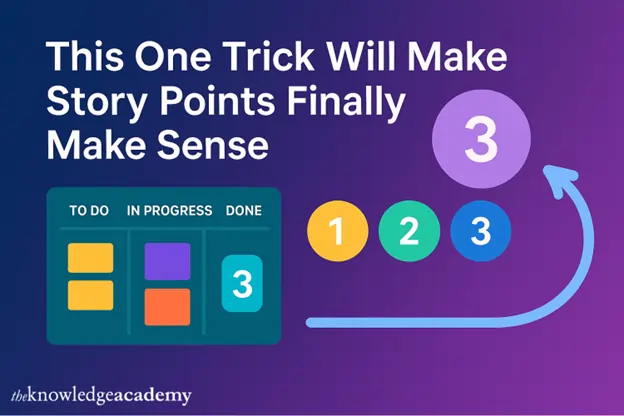Ever find yourself sitting through a sprint planning session, nodding along while others toss around story points, but you’re left wondering, “What does this mean?” If you’ve ever felt lost when discussing Story Points in Agile, you’re not alone. It’s a concept that often confuses, even for seasoned teams. By diving into Agile Courses, you’ll see how one slight shift in perspective can transform your understanding of Story Points in Agile and lead to more effective sprint planning.
Fortunately, one simple trick can make these story points suddenly click. Let’s explore that trick in this blog!
What are Story Points
In Agile project management, story points measure the work required to complete a user story. Rather than being tied to specific hours or days, they represent a relative assessment of work, complexity, and size.
In an ideal world, story points allow teams to estimate how much work can be completed in a sprint based on their past performance with similar tasks. The key is that story points measure relative effort and size, not exact time. For example, a task with a story point of five is considered five times more complex or time-consuming than a task with a story point of one. Simple, right?
However, confusion arises when teams start allocating story points without an explicit reference. If each team member has a different understanding of what constitutes a “5-point” task, miscommunication and inconsistency can occur. This is where the trick comes in.
The One Trick That Changes Everything
The secret is to use one well-known task as a benchmark rather than comparing every task to one another. This benchmark could be a task your team has already completed in a past sprint or one that everyone agrees on in terms of complexity based on shared experience.
This reference task removes much of the subjectivity and guesswork from assigning story points. Consistency is key here. If everyone agrees that task X is a “3-point” story, all subsequent tasks can be compared to that same task. This eliminates confusion that arises from individual perceptions of complexity.
For example, let’s say your team finished a simple feature in the previous sprint, and everyone agrees it was a “3-point” task. In your next sprint, match all new user stories to this 3-point reference. If a task seems more complex, it might be a 5-point story; if it seems easier, it could be a 2-point task. This consistent reference gives each team member a solid foundation for estimating the required work.
How This Trick Improves Estimation Accuracy
Now that we know how to create a consistent reference let’s explore how it improves estimation accuracy:
- Reduces Subjectivity: Using a constant reference task reduces the chances of personal bias influencing story point assignments. Since everyone starts from the same point of understanding, there are fewer discrepancies in how tasks are perceived.
- Creates Better Alignment: Estimates become easier to align when every team member clearly understands a “3-point” task. This leads to more honest planning and better communication within the team.
- Increases Confidence: Teams that are confident that their estimations are based on a shared understanding of effort are more likely to stick to those estimates. They’ll be more realistic about how much work can be completed in a sprint.
- Improves Focus on Value: This approach shifts the conversation from arbitrary numbers to value. Estimating story points based on a common reference forces the focus on delivering meaningful results rather than just assigning numbers to tasks.
- Facilitates Continuous Improvement: The more you use this reference task to estimate effort, the better your team understands story points. As your reference task evolves, your estimations will become more accurate, leading to continuous improvement in your Agile process.
Conclusion
Understanding and using story points can be challenging. But with this simple trick, using a consistent benchmark task, your team can finally start to see the bigger picture. This one approach can help eliminate confusion, reduce subjectivity, and make sprint planning more predictable and efficient. Consider The Knowledge Academy courses on Agile and Scrum to refine your Agile processes further.
Read more: Mistakes to Avoid When Choosing a Powerful Anti-Ageing Serum with Proven Results
